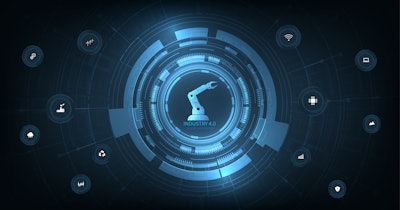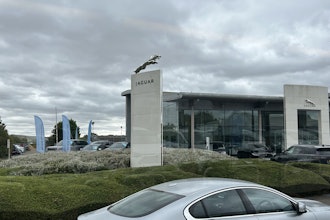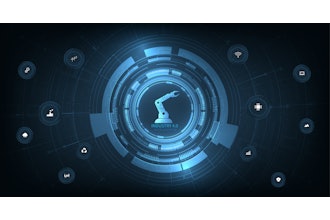
Beyond the attention-grabbing headlines of deepfakes, crippling cyberattacks, and digital espionage lies a hidden, high-stakes arena: the cybersecurity of our manufacturing and industrial backbone. The technological revolution accelerates at an unprecedented pace, promising unparalleled efficiency and productivity across factories and critical infrastructure. Yet, this very progress forges complex new vulnerabilities, transforming the digital frontier into an unseen battleground where the stakes are nothing less than the future of global production itself.
At a recent industry summit, a colleague stated: "The network works." On the surface, this sounds like a given. We rely on networks for everything – from email to streaming, global supply chains to critical industrial infrastructure. They perform their intended functions without a second thought.
But beneath this simplicity lies a complex reality, leading me to a more critical question: "The network works. But for how long, and under what conditions, will it continue to do so securely?"
To truly grasp this, we must unpack its implications. Our existing infrastructure, built on robust protocols and continuous maintenance, has been modernized with cloud computing, mobile proliferation, and increasing bandwidth to meet current demands. However, this current state is merely a snapshot.
The rapid evolution of AI, particularly "agentic AI" – autonomous machines with sophisticated reasoning – is fundamentally reshaping enterprise applications. These AI agents, increasingly distributed and operating closer to data, create a sprawling, interconnected mesh. This decentralization, while beneficial for latency and insights, profoundly challenges traditional cybersecurity.
Cutting Edge Capabilities for Legacy Equipment
Consider the sheer volume and nature of data flowing through these new networks. The plummeting cost of processing AI tokens makes it incredibly inexpensive to feed vast amounts of data, including video and audio, into language models.
This "multimodality" drives a dramatic increase in upstream traffic – a reversal of historical trends. This isn't just more data; it's a different kind, often sensitive, moving in new patterns, demanding lower latency and higher bandwidth. The network, once primarily a conduit for downstream consumption, is now a two-way superhighway for critical, real-time industrial processes.
This shift has profound implications for cybersecurity. The very protocols enabling agentic AI, like Model Context Protocol (MCP), are relatively new. Their widespread adoption means network and security teams must rapidly adapt. We can no longer assume the network is a static, secure, and free utility. Instead, it's a dynamic, vulnerable, and increasingly critical component of every industrial operation.
The implications for industrial and manufacturing environments, particularly those relying on SCADA (Supervisory Control and Data Acquisition) networks, are acute. For decades, SCADA systems, controlling everything from power grids to factory automation, operated in isolated, often air-gapped environments. This isolation was their primary security. However, a massive, albeit gradual, transformation is emerging in industrial control systems.
The drive for efficiency, real-time analytics, and predictive maintenance is pushing these operational technology (OT) networks to connect with IT networks and, by extension, the internet. This convergence, while unlocking unprecedented insights, simultaneously exposes historically invulnerable systems to new threats.
Embracing the Integration Challenge
My experience shows that technology integration into production lines is growing dramatically. Engineering teams acquire new line equipment with inherent connectivity, often without direct IT or security oversight. This creates "shadow IT" on an industrial scale, where previously segmented OT networks now require external access, often through third-party vendors with maintenance-as-a-service contracts. This is a critical pivot point for attackers.
The challenge isn't just protecting data but safeguarding physical processes—the goal is to prevent malicious actors from causing physical change in the world. We’ve seen examples of cyberattacks impacting physical infrastructure. The potential for disruption in manufacturing and critical infrastructure, where highly automated systems control complex production lines, is immense. Imagine a cyberattack subtly altering product specifications, disrupting supply chains, or even causing physical damage.
Private 5G fundamentally transforms the manufacturing landscape. Private 5G networks offer dedicated, secure, high-performance wireless connectivity within a specific industrial campus or factory. Unlike public cellular networks, the enterprise has full control over data, security policies, and network configuration.
This allows for unprecedented segmentation, enabling manufacturers to isolate critical OT systems from broader IT networks while leveraging wireless connectivity for IoT sensors, automated guided vehicles (AGVs), robots, and real-time machine-to-machine communication.
With Private 5G, manufacturers can implement granular security policies at the edge, where data is generated and processed. This is crucial for agentic AI, allowing real-time threat detection and response without latency from centralized cloud security. Policies can be enforced directly at the point of interaction, ensuring only authorized agents and devices communicate and data remains within the private network's secure confines.
The future of industrial and manufacturing cybersecurity lies in a proactive, integrated approach. It requires:
- Contextual Awareness: Understanding specific protocols and traffic patterns of agentic AI and OT systems.
- Edge Security: Implementing robust security measures directly at the industrial edge, leveraging technologies like Private 5G.
- Unified Visibility: Gaining comprehensive visibility into both IT and OT networks to identify and respond to threats in real-time.
- Automated Response: Utilizing AI-powered tools to automate threat detection and response, reducing reliance on human intervention.
- Collaboration: Fostering strong collaboration between IT, OT, and security teams, recognizing that their convergence demands a unified defense strategy. This includes system integrators updating SCADA networks increasingly teaming with managed network services providers to future-proof and secure these critical systems.
While the benefits of AI and advanced connectivity are undeniable, so are the cybersecurity risks. By embracing innovative security solutions, highly segmented networks and a forward-thinking approach, we can ensure this renaissance is not only efficient and productive but also resilient and secure.
The industrial security battleground, often unseen, is here. It's time to move beyond past assumptions and prepare ourselves for the threats of today and tomorrow.
Ed Fox is the Chief Technology Officer of MetTel, a global communications solutions provider for businesses and government agencies.




















